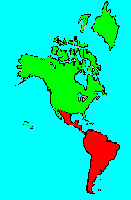SPECIES INFO
Wrinkled horse mussel (Anodon rugosus) of North America was drawn by William Swainson in 1821-22 in his Zoological Illustrations. This drawing can be used as an example of trying to trace an old description and old name into a current nomenclature.Freshwater clams or freshwater mussels (Family Unionidae) are represented in the United States by 230 known species. Europe has about 15 species in the Unionidae Family. Pollution and dams in various rivers and in lakes has caused a high percentage of the species of this family to be considered endangered.
Unionidae typically have larvae that attach themselves to specific species of fish. The movement of such fish up and down streams helps spread the species in the river systems. Adult mussels siphon large amounts of water to obtain various microorganism for food.
A closely related group, the small fingernail clams, belong to the Sphaeriidae Family.
In his book, Fresh Water Invertebrates of the United States, Robert Pennakbook observes that in 1936 there were 100 species of Unionidae in the Tennessee River. The number of species remaining in that river was less than 50 in the l980s. There are probably even fewer today. The reduction of their number in the Tennessee River may be related to the various TVA dams.
In the Illinois River in l906 there were 45 different species. In l969 that number had decreased to only 24 species. The reduction in the Illinois River may be related to pollution.
Clams (Order Veneroida) contain shells with two equal valves.
Bivalves and Clams (Class Bivalvia) are found in both fresh and salt water. Several different methods of classification have been proposed for dividing this class into orders and families. The Field Guide to Seashells of the World by Gert Lindner is a good summary of the various taxonomic systems. Bivalves typically strain water for micro-organisms.
Mollusks (Phylum Mollusca) are a large and varied group of animals. Some species are found on land; others are found in freshwater; many are found in the oceans of the world. The most familiar mollusks have an external shell surrounding a soft body. Well-known examples of mollusks are snails and clams. The major classes are as follows:
Ablacophora: - - - Worm appearing
Polhyplacophora (Amphineura): - Chitons
Scaphopoda: - - - Tusk Shells
Gastropoda: - - - Gastropods
Bivalvia (Pelecypoda): - Clams, etcetera
Cephalopoda: - - - Octopus, Nautilus
Monoplacophora: - - - A recent discovery
Animal Kingdom contains numerous organisms that feed on other animals or plants. Included in the animal kingdom are the lower marine invertebrates such as sponges and corals, the jointed legged animals such as insects and spiders, and the backboned animals such as fish, amphibians, reptiles, birds, and mammals.


